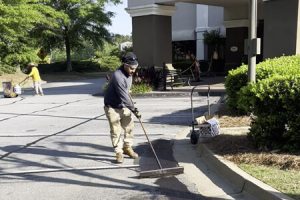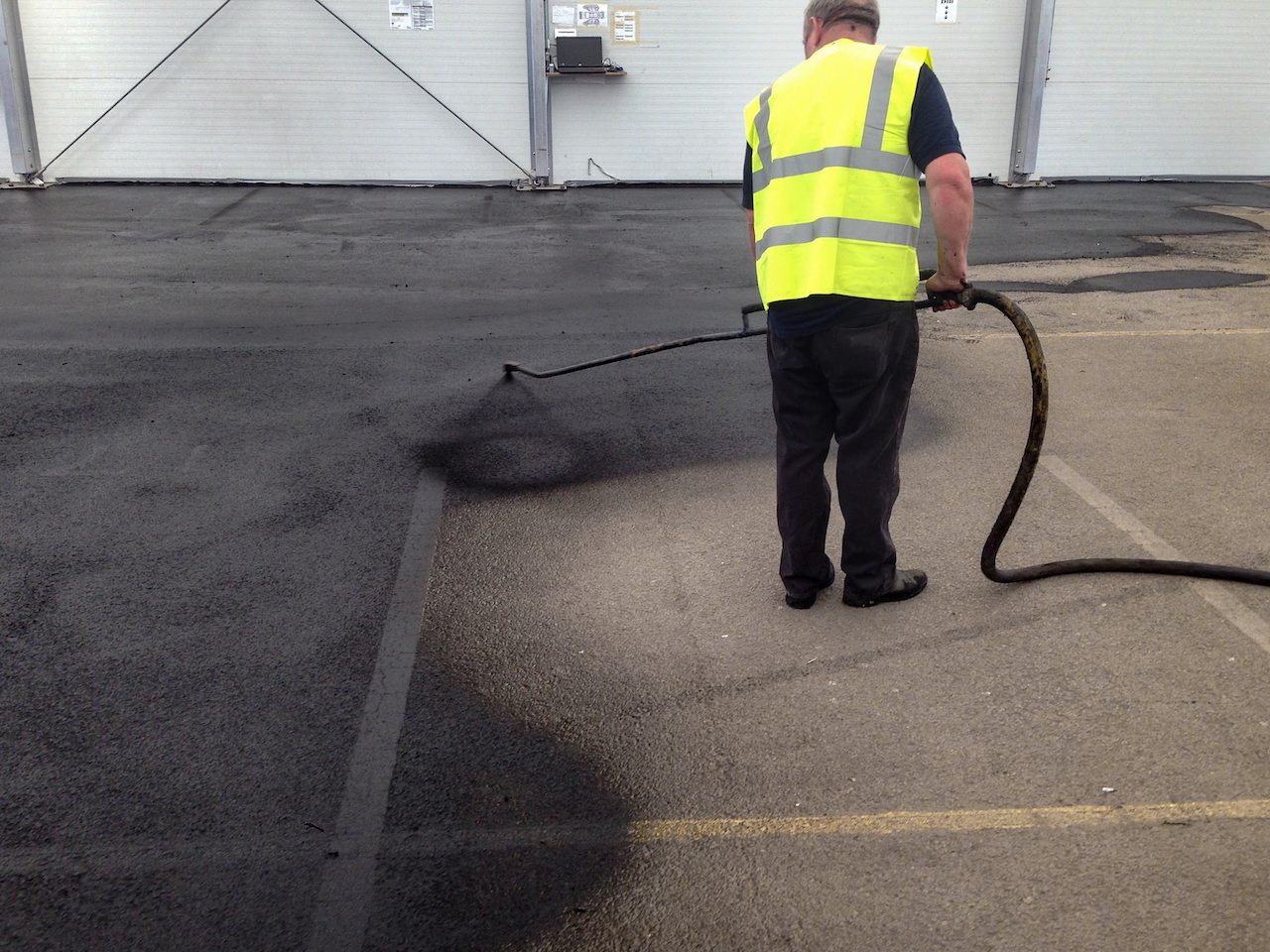
What Is a Full-Depth Asphalt Repair?
An asphalt pavement consists of multiple courses of compacted asphalt that rests on a compacted base of gravel, stone, or other aggregate. When pavement damage occurs, it may be relatively shallow, or it may extend all the way to the base. Asphalt patching is commonly the preferred repair method for damage that parking lot maintenance companies can address with crack repairs. There are three categories of patches that parking lot maintenance & repair companies can employ.
1. Skin Patches: Contractors apply skin patches on the surface of the pavement to mend damage that does not go deeper than an inch or two. This is the only patching method that does not require any asphalt removal.
2. Partial-Depth Patches: To make this type of paving repair, contractors remove just enough of the asphalt courses to take out the damage. Although the asphalt removal may go quite deep, it does not expose the base, so the contractor cannot perform any work on it. The procedure ends with the installation and compaction of replacement asphalt.
3. Full-Depth Patches: To perform a full-depth patch, the contractor removes all layers of the asphalt. This provides access to the base, so the contractor can reconstruct, repair, or strengthen it. After completing all work on the base, the contractor installs and compacts the replacement asphalt.
What Causes a Pavement to Need Strengthening With a Full-Depth Paving Repair?
Despite your best efforts to be proactive about your asphalt maintenance, your pavement needs frequent paving repairs for potholes, fatigue cracking, and rutting. If this describes your experience, your pavement may need strengthening because of one or more of the following.
1. Overloading: Asphalt contractors design pavements to support vehicles of certain weights and in certain numbers. Exceeding either of these parameters can result in overloading. For example, suppose a developer constructed the streets in a planned community for only the passenger vehicles belonging to residents. Two years later, the city extended a major artery to connect with the main thoroughfare in the community. Suddenly, many more vehicles, including heavyweight trucks, began taking the new shortcut through the community. Very quickly, the pavement began to crack and deteriorate at an accelerated rate.
2. Design Errors: Although extremely rare, it is possible that the original paving contractor made an engineering error. Perhaps the base was not deep enough, or the depth of the asphalt was insufficient. Errors in the original design could result in a pavement that lacks the strength to serve its intended use. A full-depth patch can strengthen both the base and the asphalt paving.
3. Compaction Issues: It is also possible that the contractor failed to achieve proper compaction during the construction phase. Issues typically occur when the asphalt mix cools too much prior to compaction. However, they can also result from using the wrong roller as well as operator errors.
MH Greeson is an asphalt maintenance contractor, and has the experience, staff, and equipment to increase the strength of your pavement with a full-depth asphalt patch. Our services include asphalt paving and crack repairs, sealcoating, ADA compliance, bollard installation, parking lot striping, car stops, traffic signage, and parking lot maintenance. We have a reputation for consistently providing superior workmanship and exemplary service at competitive prices. To request a free quote, you can email Tripp@MHGreesonPaving.com, fill out our online form, or call our office in Marietta at 770-335-2983.




